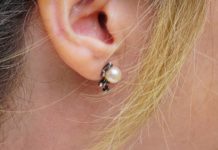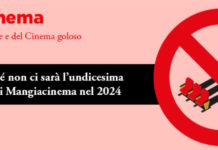Recovery after stroke with stem cell therapy
What results can be obtained from the therapy in stroke?
Why should patients and their caregivers pay attention to stem cell therapy?
A stroke, or cerebrovascular accident (CVA), is a condition where a part of the brain is damaged or dies due to the blood flow to that part of the brain being impaired, either by a blockage or bleeding.
It was previously classified as a cardiovascular disease, due to it arising from a problem with the blood vessels in the brain. However, it was recently classified by WHO as a neurological disease as the nervous system is the most affected.
Modern rehabilitation is able to do well at helping patients restore some of their functional deficits. However, there is potential for stem cell stroke rehabilitation to do even more. This article will discuss how regenerative medicine can help patients recover better.
Causes and heredity of stroke
There are two major ways that a stroke can arise. It can be ischemic, due to an artery in the brain being blocked by a blood clot, or hemorrhagic, which occurs when a blood vessel in the brain bursts.
With either cause, some parts of the brain aren’t able to receive oxygen since blood flow is now impaired. After some time, these sections of the brain will die, which is what causes this condition.
Both ischemic and hemorrhagic CVA share some risk factors, which include:
- Hypertension
- Overweight or obesity
- Excessive alcohol consumption
- Smoking
Unique risk factors for an ischemic stroke include diabetes and high cholesterol. The risk factors for a hemorrhagic CVA also cover inactivity, stress, and brain aneurysms.
One major concern people have is whether their risk is increased if they have a close family member who has had one. Heredity indirectly influences the risk of a stroke by making it more likely to develop one of its causes, when present in a first-degree relative.
Recovery after stroke with stem cell therapy
Using mesenchymal stem cells, a 2020 study was able to show marked improvements in motor function, while generally being safe (doi:10.1007/s12975-020-00787-z).
Another study was able to back the efficacy of stem cell treatment in CVA recovery by showing that it had a positive effect on the patient outcome six months after receiving the cells (doi:10.1177/1747493017696098).
In 2012, a study observed functional outcomes and three stroke scales and showed improvement in 12 months following treatment in 30 patients (doi:10.3727/096368914X678562).
Overall, this points to the efficacy of stem cell therapy in cerebral and brain stem stroke recovery.
What results can be obtained from the therapy in stroke?
Some common symptoms of CVA include:
- muscle weakness or paralysis – often on just one side;
- changes in speech;
- cognitive deficits.
Therapy based on the intravenous introduction of cell products has the potential to improve these clinical features. Motor function is easily the most observed among them. Research has shown significant motor improvement in patients who are treated with stem cells, clearly demonstrating the efficacy of this treatment (NCT01716481).
Why should patients and their caregivers pay attention to stem cell therapy?
Stem cell therapy is ushering us into a new level of medical treatment, by utilizing the body’s natural healing capacity to manage conditions that are traditionally difficult to treat. This is just one reason that everyone, patients and caregivers included, should pay attention to.
For the benefits this approach can provide, it is relatively easy to administer, and it is rather quick and painless. It doesn’t always need to be given as an injection directly into the affected organ. An infusion, in most cases, is enough to deliver the cells where they are needed due to the ability of these cells to home to the site of injury.
It has also been shown to be safe, with very few patients experiencing anything above minor side effects following administration.
Conclusion
After a stroke, many patients go through months of physiotherapy, medication, and several other therapies to try and restore as much function as possible. However, this is best done as soon as possible, and waiting too long makes it less likely for a patient to recover fully.
Fortunately, stem cell treatment gives patients hope by providing a promising, safe, and effective way to rehabilitate after a CVA. So, why wait until it is too late when there’s a revolutionary treatment available to give you or your loved one the chance to live life more like normal again?
















































